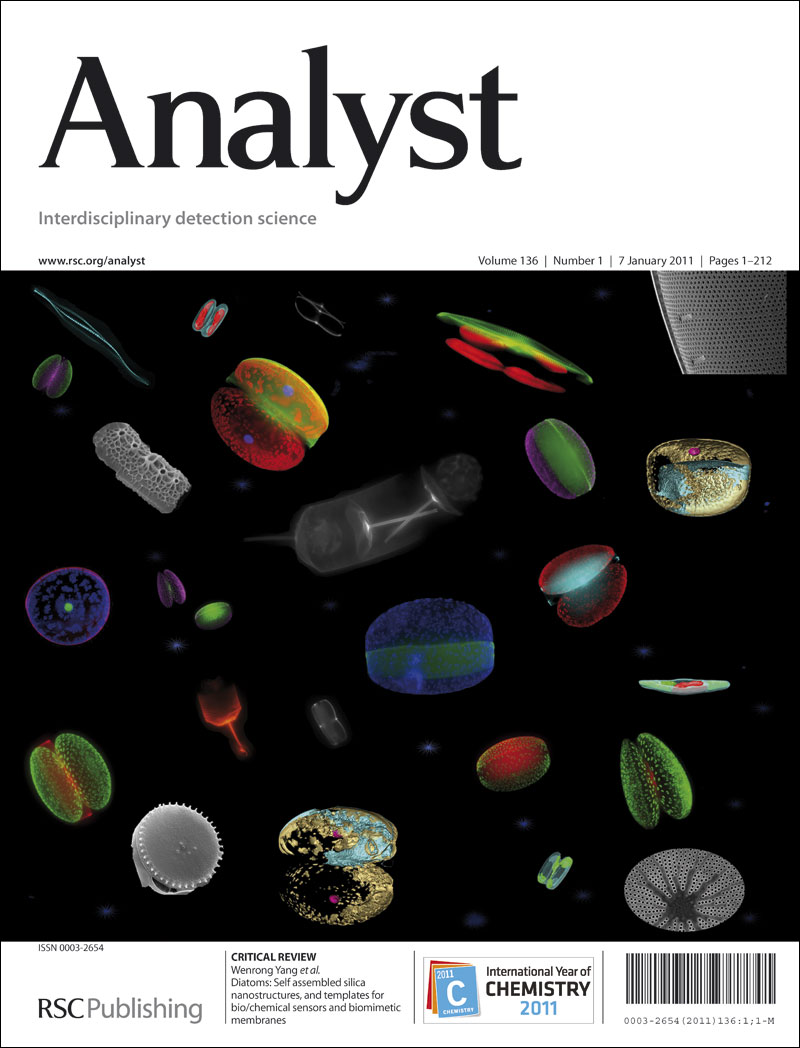Label-free Diagnosis of Lung Cancer by Fourier Transform Infrared Microspectroscopy Coupled with Domain Adversarial Learning
IF 3.3
3区 化学
Q2 CHEMISTRY, ANALYTICAL
引用次数: 0
Abstract
Lung cancer is one of the most prevalent malignancies, characterized by high morbidity and mortality rates. Current diagnostic approaches primarily rely on CT imaging and histopathological evaluations, which are time-consuming, heavily dependent on pathologists' expertise, and prone to misdiagnosis. Fourier transform infrared (FTIR) microspectroscopy is a promising label-free technique that can offer insights into morphological and molecular pathologic alterations from biological tissues. Here, we present a novel FTIR microspectroscopic method enhanced by a deep learning model for differentiating lung cancer tissues, which serves as a crucial adjunct to clinical diagnosis. We propose an Infrared Spectral Domain Adversarial Neural Network (IRS-DANN), which employs a domain adversarial learning mechanism to mitigate the impact of inter-patient variability, thereby enabling the accurate discrimination of lung cancer tissues. This method demonstrates superior classification performance on a real clinical FTIR dataset, even with limited training samples. Additionally, we visualize and elucidate the FTIR fingerprint peaks, which are linked to the corresponding biological components and crucial for lung cancer differentiation. These findings highlight the great potential of incorporating FTIR microspectroscopy with the deep learning model as a valuable tool for the diagnosis and pathological studies of lung cancer.傅里叶变换红外微光谱与领域对抗学习相结合的肺癌无标记诊断
肺癌是最常见的恶性肿瘤之一,其特点是发病率和死亡率高。目前的诊断方法主要依赖于CT成像和组织病理学评估,这是耗时的,严重依赖于病理学家的专业知识,并容易误诊。傅里叶变换红外(FTIR)微光谱学是一种很有前途的无标记技术,可以深入了解生物组织的形态和分子病理变化。在这里,我们提出了一种新的FTIR显微光谱方法,该方法通过深度学习模型增强,用于鉴别肺癌组织,作为临床诊断的重要辅助手段。我们提出了一种红外光谱域对抗神经网络(IRS-DANN),该网络采用域对抗学习机制来减轻患者间变异性的影响,从而实现肺癌组织的准确区分。该方法在真实临床FTIR数据集上显示出优异的分类性能,即使训练样本有限。此外,我们可视化并阐明了FTIR指纹峰,这些峰与相应的生物成分有关,对肺癌分化至关重要。这些发现突出了将FTIR微光谱与深度学习模型结合起来作为肺癌诊断和病理研究的宝贵工具的巨大潜力。
本文章由计算机程序翻译,如有差异,请以英文原文为准。
求助全文
约1分钟内获得全文
求助全文
来源期刊

Analyst
化学-分析化学
CiteScore
7.80
自引率
4.80%
发文量
636
审稿时长
1.9 months
期刊介绍:
"Analyst" journal is the home of premier fundamental discoveries, inventions and applications in the analytical and bioanalytical sciences.
 求助内容:
求助内容: 应助结果提醒方式:
应助结果提醒方式:


